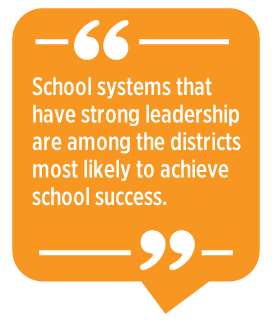9 Ways to Support ELs in 2021: Privileging Teachers' Voices
by Marisa Ferraro
 Teachers play pivotal roles in educational reform. Change
often begins at the ground level, in the classroom. It is imperative that
leadership lend teachers the mic so educators can mutually invest in policies
and pedagogies that support all students. In recent years,
the focus of dual language learning has extended beyond classroom practices to
identify ways school leadership can support, promote, and expand equitable and
robust programs throughout the district. The growing cultural and linguistic
diversity of students has raised important questions regarding how students
succeed academically. Equally critical is the need for dual language bilingual
education leadership to cultivate and sustain communities of linguistic
diversity. School systems that have strong leadership are among the districts
most likely to achieve school success, particularly in the area of superdiverse
learners.
Teachers play pivotal roles in educational reform. Change
often begins at the ground level, in the classroom. It is imperative that
leadership lend teachers the mic so educators can mutually invest in policies
and pedagogies that support all students. In recent years,
the focus of dual language learning has extended beyond classroom practices to
identify ways school leadership can support, promote, and expand equitable and
robust programs throughout the district. The growing cultural and linguistic
diversity of students has raised important questions regarding how students
succeed academically. Equally critical is the need for dual language bilingual
education leadership to cultivate and sustain communities of linguistic
diversity. School systems that have strong leadership are among the districts
most likely to achieve school success, particularly in the area of superdiverse
learners.
This article
shares the journey of how one of the U.S. Northeast’s largest school districts
implemented a comprehensive professional development initiative. The initiative
spanned 5 years and provided workshops to nearly 2,000 educators. The goal was
simple—every teacher, paraprofessional, tutor, specialist, coordinator, and
administrator would complete minimally 15 hours of workshops. A small cadre of
educators completed 25 hours, which included an application to practice,
coaching piece.
Privileging Teachers’ Voices
Following
the initial 15-hour workshop, having engaged with sheltered pedagogies and
practices (Echevarria & Graves, 2014), educators were asked two
questions through the lens of Walqui’s (2000) 10 priorities for designing
instruction for emergent bilinguals:
-
What do you need to enact this
principle in your classroom?
-
What do you need to enact
this principle throughout your school?
The analysis of nearly
2,000 teachers’ recommendations resulted in nine categories that call for a
shift in how leadership plans for collaboration and allocates resources. By
heeding the advice of teachers, leadership can optimize organizational shifts
to yield effective pedagogies for dual language learners and empower
educational communities. Sharing teachers’ voices with leadership privileges
teachers’ experience and pedagogically sound advice. The nine areas of
recommendations, representing 40 specific and concrete actionable steps are
intended to prompt a discussion of district resources.
 1. Plan Curriculum
(34%)
1. Plan Curriculum
(34%)
In the area
of curriculum adjustments and modifications for dual language learners,
teachers weighed in heavily. The most frequent recommendation to leadership was
a protection and allocation of time: time to teach, time to revise, and time to
plan. Teachers articulated the need for time to communicate and collaborate
with grade-level and discipline-level teams, EL teachers, and special education
teachers. In doing so, teachers have problematized the dichotomy that persists
between the mainstream curriculum—that is, the curriculum for all students—and
the curriculum that is offered to dual language learners via specialized
language support programs. Ultimately, teachers called for a consistency in the
curriculum and a cohesion among the disciplines and contexts and proposed
several ways to come together for a common goal of ensuring access to
meaningful curriculum.
2. Allocate Resources (17%)
The need for
resources is imperative to make the recommendations possible. These
recommendations represent a call to action that underscore instructional
resources, material resources, human resources, technological resources, and monetary
resources. Though that may seem overwhelming, I wish to ground the educators’
recommendations by highlighting one, in particular: “create a central database
for teacher made modified materials for ELs” to illustrate the feasibility of
such requests.
3. Cultivate
Communities (11%)
It takes
time to establish communities in the classroom, on the playground, and in the
school. Teachers ask to be freed from the constraints of pacing guides that
focus exclusively on instruction and timing while not attending to individual
students’ needs. The diversity and differences dual language learners bring to
the community should be understood in its multilayered complexity; they should
be appreciated and valued. In doing so, teachers can respond by making
curriculum culturally relevant and can work to connect students to the greater
community through out-of-classroom activities.
4. Support and Trust
Teachers (9%)
Teachers
need support from administration to provide them release time to observe
“master teachers,” to work with peer mentors, to implement their newly learned
sheltered instructional practices. Teachers request feedback from
administrators via focused walks that observe engaged students. Educators
express the need for administrators to take the lead in establishing explicit
norms and expectations of how to do school. Teachers also ask that their input
be solicited and that the quality of teachers is made a priority.
5. Reconsider
Assessment (7%)
In creating
a classroom community and delivering high-quality sheltered instruction,
teachers ask leadership to rethink the timing and administration of
standardized assessments. In lieu of a standardized, one-size-fits all model of
assessing dual language learners, educators suggest exploring authentic,
linguistically differentiated assessments, compatible with a linguistically
differentiated curriculum.

6. Rethink Instruction
(6%)
Following
the sequence of interpretation of this teacher survey data, when dual language
learners find their homes in the classrooms, teachers are the locus of
instruction. The manner in which the curriculum is delivered to students
matters. To that end, educators asked their leadership to attend to class size
and space, daily schedules, and mode and approach of the delivery. Educators
expressed a willingness to implement strategies specific to sheltered
instruction.
7. Make Students
Visible (5%)
To help
students thrive in school communities, they need to be seen as valuable,
contributing members. Educators on all levels, from paras through
administrators, are seeking information about students’ backgrounds. They wish
such data could be readily accessible. Once educators are provided with
information about students’ cultural backgrounds, native languages, previous
education, and English language proficiency, they can begin to see these
students. Only then can they respond with culturally sustaining
practices.
8. Streamline
Identification and Placement (5%)
When
children arrive to a new home in a new city, one of the first steps families
take is to register children for school. If in the process of registration,
school officials suspect the family has a dominant language other than English,
subsequent steps ensue to identify that soon-to-be student as an English
learner, usually based upon the home languages spoken. These questions play a
key role in the placement into a language support program. Educators request
the leadership to use a variety of assessments in this identification process,
to consider the background of individual students and to diversify the kinds of
language programs to support new dual language learners.
9. Partner With
Families (3%)
Educators
expressed the reenactment of advisory groups so that educators can use a team
model to support students “living in the fringe of school.” Educators
unanimously feel that in order to effectively support the dual language
learners in the schools, they need to recognize the holistic needs of the
family and respond thoughtfully. In doing so, teachers request that purposeful
outreach be planned to connect families with teachers and classroom activities.
Teachers also request that school leaders reach out to local business to create
partnerships and possible real-world skill building opportunities to prepare
them for life outside the classroom.
Heeding the Call to Action
There remains
much work to be done in helping administrators realize that preparing
high-quality educators to equitably meet the needs of dual language learners
extends beyond the confines of the classroom. Teachers highlight the need for
instructional guidance, resources, and support from leadership to effect change
in sustaining equitable pedagogies for dual language learners. The
superdiversity of our student culture calls for a shift in our educational
ethos, a reallocation of time and resources, and a closer look at what
constitutes collaborative leadership to support dual language education in our
public schools.
It is
critical we create a roadmap for schools who struggle to design effective
professional development. But before hastening to deliver and measure, or spray
and pray, let us heed the recommendations of those closest to the students, and
respond with care and compassion. The secret to what makes professional
development stick may be more about the environments cocreated by leadership
and teachers than the efficacy of professional development program design. The
teachers’ voices are essential to informing how leadership can collaborate
within school communities to effectively serve the extraordinarily diverse
needs throughout our country. As a nation of educators who undoubtedly realizes
the implications of growing diversity among the students, we are obligated to
change the course by addressing our current failures.
References
Echevarria,
J., & Graves, A. (2014). Sheltered content instruction:
Teaching English learners with diverse abilities (5th ed.). Allyn
& Bacon.
Walqui, A.
(2000). Access and engagement: Program design and instructional
approaches for immigrant students in secondary school. Delta
Systems.
For Further
Reading
Collier, V.
P., & Thomas, W. P. (2009). Educating English learners for a
transformed world. Fuente Press.
Darling-Hammond, L., Hyler, M. E.,
& Gardner, M. (2017). Effective teacher professional
development. Learning Policy Institute.
DeMonte,
J. (2013). High-quality professional development for teachers:
Supporting teacher training to improve student learning. Center for
American Progress.
Marisa
Ferraro is an assistant professor in the
Department of Curriculum and Learning at Southern Connecticut State University.
Her research examines school discourses that create highly engaged practices
that reimagine learners’ classroom identities for social and cultural
participation. She works closely with teachers and administrators to support
the education of emergent bilingual students by problematizing the inequities
and challenges of educational systems.